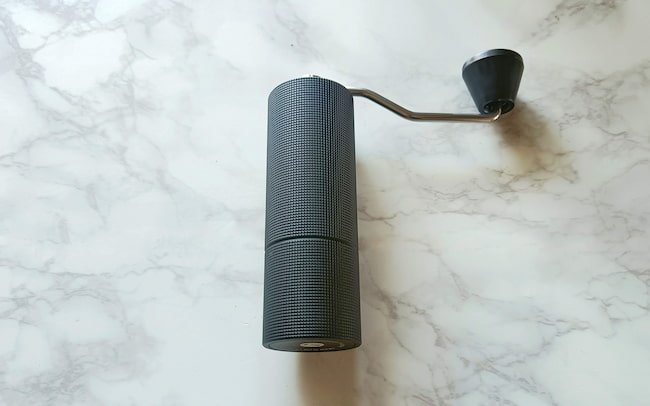Timemore has had a couple of smash hits in the last few years.
The Black Mirror scale is one of the most popular products among budget-conscious coffee lovers.
But it’s arguably the Chestnut C2 grinder that has made the biggest splash out of all Timemore products.
Now the brand has just released a successor, the intuitively named Timemore Chestnut C3, which claims to be better in every way.
I have been testing the grinder for a while now, and in this review, I’ll tell you what I think about Timemore’s claims.
Sidenote: I should mention that my posts about Timemore are NOT sponsored and that I have paid for the product with my hard-earned cash.
About Timemore
Timemore Coffee is a specialty coffee brand founded in 2012 by a group of coffee enthusiasts. The company is based in Shenzhen, China, and its so-called “mission” is to produce high-quality coffee products that are accessible to everyone.
I have previously drawn comparisons to Xiaomi (a Chinese electronics brand aimed at budget-conscious consumers), and it still feels pretty accurate.
Timemore’s product range includes coffee scales, hand grinders, and brewing equipment, and most of them are, objectively speaking, great value for the money.
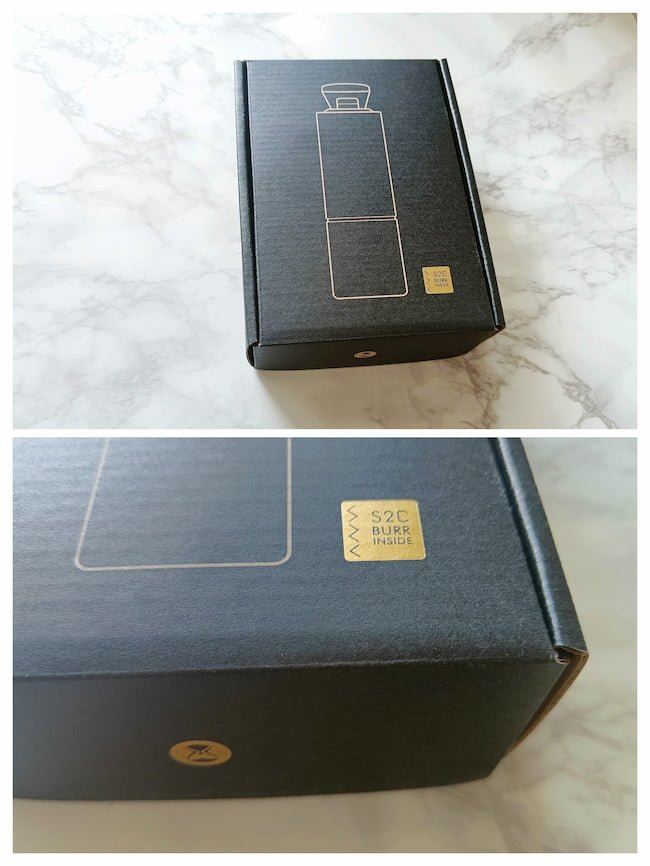
Timemore C3 vs. C2
So this is the part of the review where I usually talk about the design aspects of a product. But since the C2 and C3 are almost identical, there will be a lot of overlap with my previous review.
The Timemore C3 has an anatomically shaped handle that spins smoothly due to being mounted on ball bearings. On the inside, there’s a set of 38 mm steel burrs.
We have seen this design on many hand grinders, and it works perfectly fine, so there’s no real reason to change it.
The body’s material is aluminum, while the hand crank and burrs are stainless steel.
Weighing in just around a pound (423 g, to be precise), this grinder is relatively lightweight compared to many competitors. This is partly achieved by using plastic stabilizers on the inside and cutting down on unnecessary fat.
Being lightweight is a plus, but some people will see plastic internals and thinner aluminum as drawbacks.
I’m not sure if the plastic is something you need to worry about – besides for aesthetic reasons. The stabilizers seem well made, and they are not exposed to excessive force during regular operation.
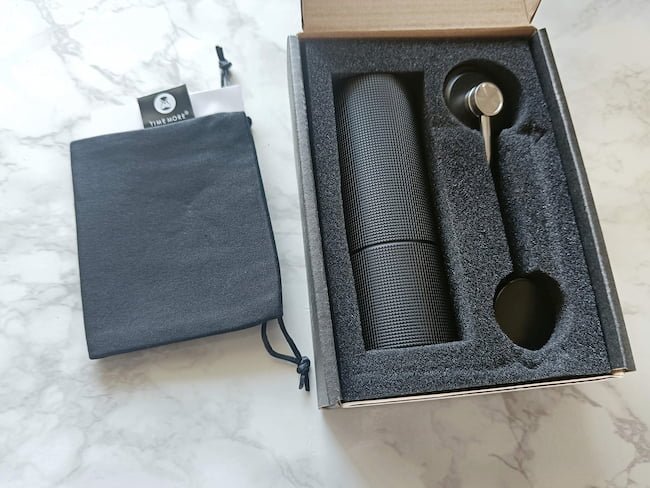
The C3 is still a cheap grinder, so the company had to make a few compromises – this being the most noticeable. Also, remember that the much more expensive Comandante has some plastic internally.
The body is made of dark-grey aluminum, which has a unique textured surface. I think it looks pretty good, and it’s not something I have seen other brands than Timemore use. To my eyes, the color also looks like a slightly darker (and more awesome) shade of grey compared to the C2.
The idea behind the surface is that it gives some additional grip. At the same time, the diameter and ergonomics of the C3 are pretty comfortable, so it’s a pretty smooth experience to operate the grinder.
Differences compared to C2
On the outside, there are not many things to get excited about with the C3. It’s pretty much business as usual. But if it ain’t broken, don’t fix it. The C2 was not broken; it was doing very well indeed.
The dial indicator is now steel compared to plastic on the old model, but otherwise, the grinder is the same as far as I can tell.
The big difference in C3 is a new burr set inside.
This burr uses what Timemore calls “spike to cut” technology; also abbreviated to S2C in the company’s marketing materials.
The inner cone burr does look rather unusual, with vertical lines going up across the upper part of the burr.
This design is based on the burr set used in Timemore’s flagship model, the Chestnut X.
However, these burrs are NOT the same. They are slightly smaller at 38 mm vs. 42 mm on Chesnut X, and the geometry is also different.
When Timoremore launched the first version of “Spike to Cut” burrs, it was met with great fanfare; it was evident that the company thought that this was a competitive advantage.
However, the reception was pretty lackluster. The burrs are relatively slow while not providing clarity and sweetness at the same level as rivals such as Comandante C40 and 1Zpresso K-Max.
I have yet to try the “Chestnut X” grinder, but this is information I have from trustworthy coffee acquaintances.
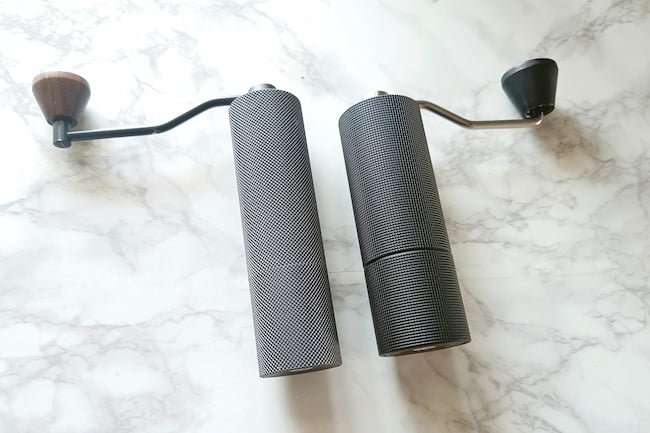
new S2C burrs?
Back when I reviewed Timemore C2 a couple of years ago, I was rather impressed by the speed of the burrs.
Suddenly, there was a grinder that could almost rival the 1Zpresso Jx in terms of speed.
Unfortunately, the new burr set is a step back in this aspect. On a typical pour over setting, I’d estimate that you get a speed of around 2,5 grams per second, which is on the slower side.
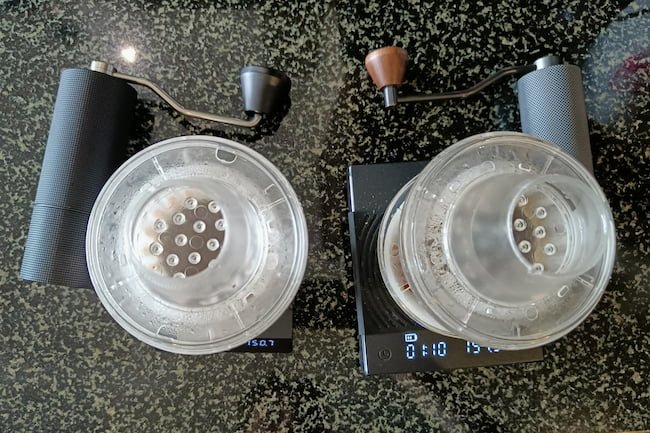
How about the flavor?
I don’t have the C2 anymore, so I compared the grinder to the Slim Plus with E&B burrs, which I have previously reviewed.
The E&B burrs are supposed to be a bit more consistent than the original C2 burrs while also being able to grind for espresso.
To tease out the difference between the C3 and Slim Plus, I compared the grinders via cupping and brewing with the Gabi Master B.
At first, I found it hard to notice any clear difference. Both grinders provided sweet cups but with a slightly faint aftertaste.
However, after testing, it became clear that the C3 had a bit of a signature flavor. It’s rather sweet and has medium clarity.
However, the aftertaste can be slightly short, and it also has a somewhat muted acidity.
| >1000 μm | 1000-400 μm | <400u μm | |
| Timemore C3 | 33.5% | 59% | 7.5% |
| Timemore Slim Plus | 34% | 58.5% | 7.5% |
This profile suited some light roast coffees I used during the testing period.
But overall, I can’t say that the C3 is in a different league than Slim Plus with E&B burrs.
They don’t taste identical, but they are in the same group of mid-range hand grinders that do a solid job without being revolutionary.
My sifting tests also supported the impression; the C3 had a slightly more consistent distribution with more particles in the ideal zone.
However, the difference is relatively tiny if you add a third grinder to provide some additional perspective.
Timemore C3 for espresso?
One of the main downsides of the Timemore C2 is its poor performance for espresso. While you technically can grind fine enough, it just takes forever. You’ll probably have to grind for 5 minutes to get a double shot. This is just not acceptable.
The C3 does promise that it can grind for espresso. In my testing, I found this to be true.
However, the range is extremely limited.
I tried a few different settings, and this was my result:
7 clicks:
16 g in, 42 out in 82 seconds. In other words, the shot choked!
8 clicks:
16 in, 43g out in 19 seconds. This shot was too fast, but we’re in the correct zone here.
It took about 55 seconds to grind this dose, so it’s not a fast espresso grinder, but it’s acceptable.
9 clicks:
16g in, 42 out in 13 seconds.
In summary:
If you want to use the Timemore C3 for espresso, you’ll most likely be limited to one (1!) setting that works for your machine.
Unfortunately, you’ll have to dial in the shot by using dose size and adjusting the tamp pressure.
This is, of course, not ideal, but if you want to make espresso on a budget, there will be some compromises. That’s just how it is.
However, it’s already possible to 3d-print or buy various “modded” adjustment wheels for the C2 and Slim Plus in places like Etsy and Aliexpress. These “mods” will give you an extra step between each grind setting, which provides you with more flexibility when dialing in shots.
While the spare parts made for other Timemore grinders likely won’t fit the C3, my guess is that it will probably not be long before you can find similar options for the newest model.
I have also seen people online talking about modifying the adjustment wheel by drilling extra holes, but this is not something I have personally experimented with.

What about the flavor? In my testing, it was not great, but I must admit that I didn’t spend a lot of time pulling the perfect shot. My impression is that you can get decent results with darker roasts and pull shots suitable for milk drinks. However, with medium and light roasts, you’ll face astringency.
Conclusion
The Timemore C3 is in many ways a logical upgrade to the C2.
While I was personally quite impressed by the C2, I don’t have the same enthusiasm for the C3.
While it’s still a solid grinder, it’s slower than its predecessor and (at the time of writing) a bit more expensive.
The two features I enjoyed the most about the C2 were its affordability and fierce grinding speed.
I’m curious to see what price the C3 will land at in a couple of months.
If it’s in the same range as the C2, it still makes sense to go for it.
However, at the moment, the C3 is relatively close to Timemore’s own Slim Plus model in terms of price. You also have the Q2 from 1Zpresso in this price range. Both are grinders that feel a bit more premium.
If you want to dabble with espresso, you should probably go for the C3, but if the price is the primary concern, it will make sense to keep an eye out for a discounted C2.
➡️ Check the current price on Amazon
➡️ Check the current price on Aliexpress
